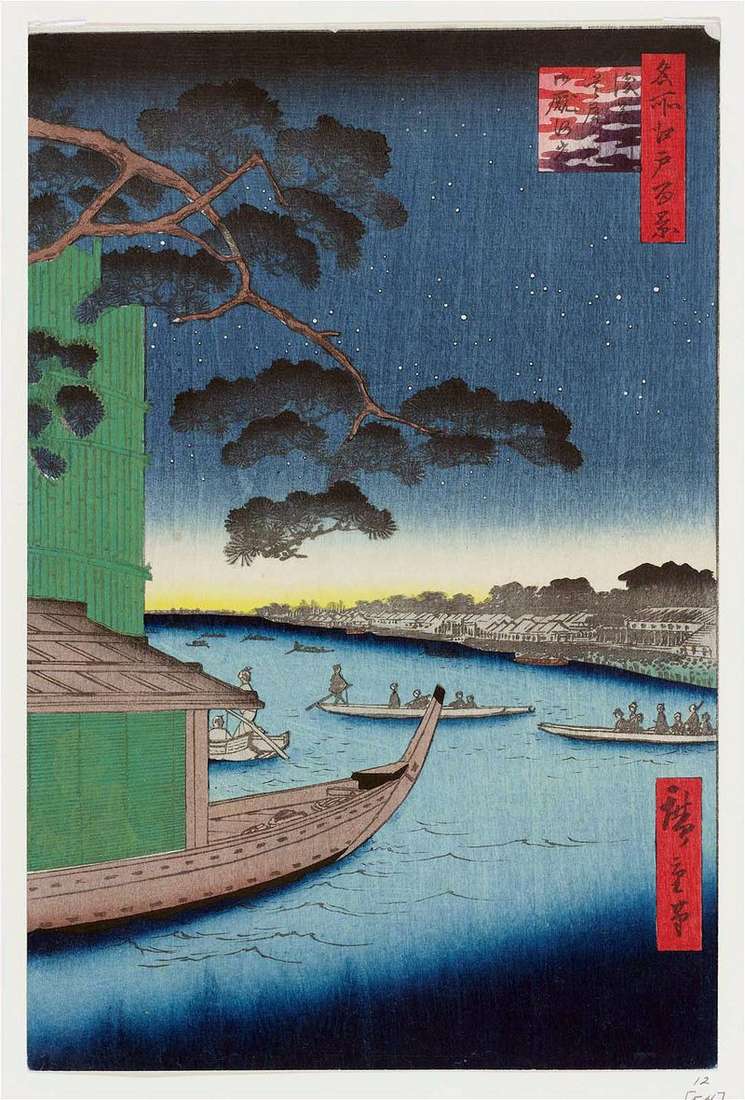
In this area, the Sumidagawa River was called Asakusagawa. Behind the gates of Asakusa Gomon were the government rice warehouses of Asakusa Gozo. Warehouses were located on eight berths, as rice was delivered on ships. Between the fourth and fifth berths the pine of Suby grew. “Suby” means “from the beginning to the horse”. The first pine was broken by a strong wind and a new one was planted in its place. The silhouette of a pine tree with spreading branches stood out against the background of warehouse buildings, it was especially well seen from the river.
Nearby was the quarter of Yesivara and visitors of the quarter had a custom to tell about the spent night under the pine “Suby no matsu”. In the foreground on the left is the covered boat of Janebune, on the deck of which the theta sandals are, their owners are inside, behind the cane blinds. For janebune, another boat – tequibune, her passenger, apparently, is heading to “Esivara”. The stars are bright in the dark sky. Hiroshige uses in this engraving the favorite method of contrasting the comparison of plans.
The sky in the late engraving is not just dark, almost black, as in the first version, but dark blue with a dark strip at the top edge. It is brightened at the horizon by a bright yellow stripe, turning into almost white.
 The Asakusagawa River, the Miyatogawa River, the Okavaabata Embankment by Utagawa Hiroshige
The Asakusagawa River, the Miyatogawa River, the Okavaabata Embankment by Utagawa Hiroshige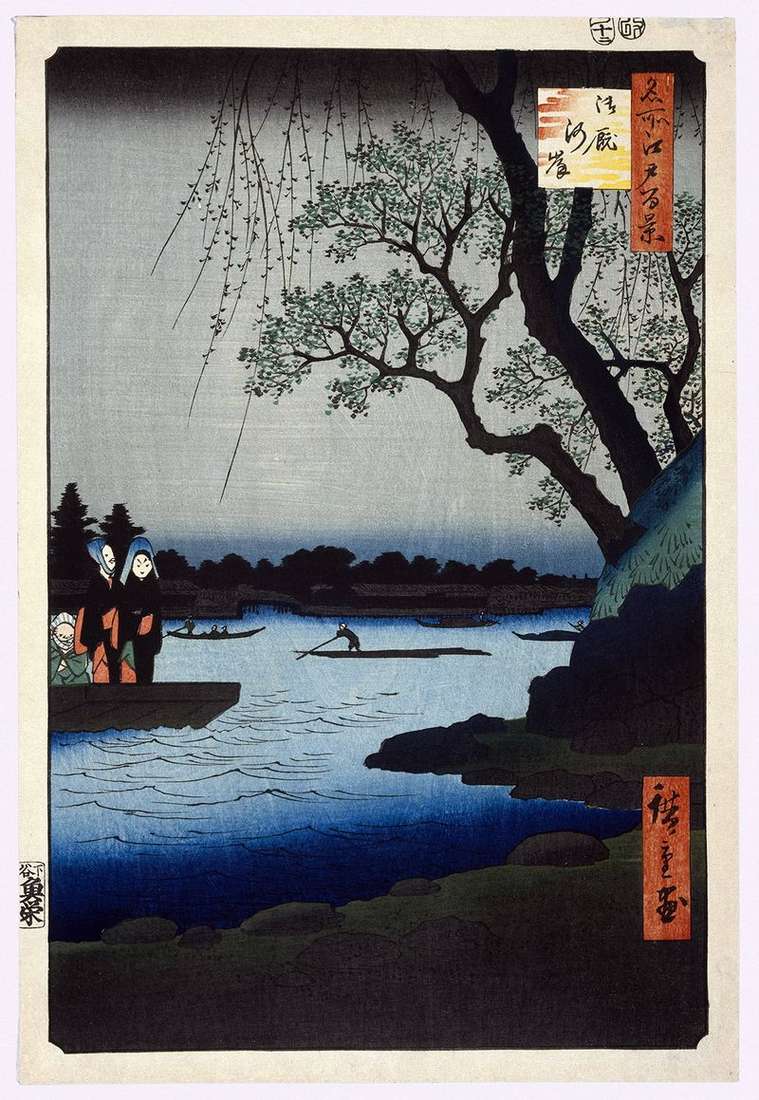 Embankment of Ommayagasi by Utagawa Hiroshige
Embankment of Ommayagasi by Utagawa Hiroshige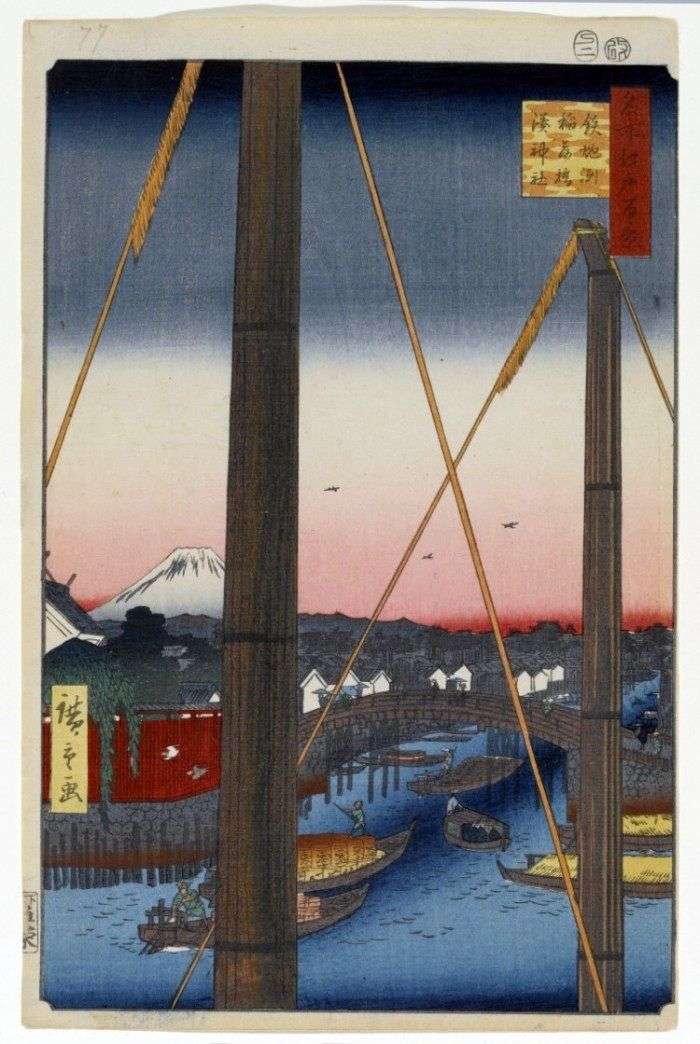 Inari-basi bridge in Teppozu, the sanctuary of Minato-jinja by Utagawa Hiroshige
Inari-basi bridge in Teppozu, the sanctuary of Minato-jinja by Utagawa Hiroshige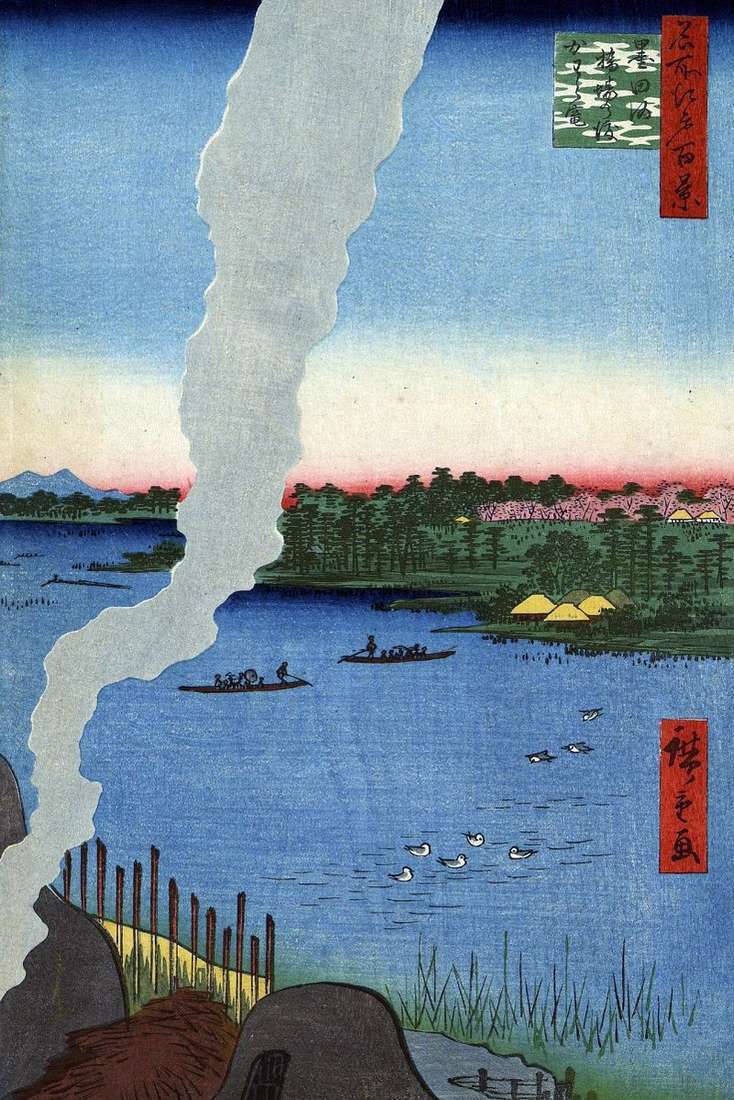 Furnaces for roasting at the crossing of Hasiba no Watasi on the Sumidagawa River by Utagawa Hiroshige
Furnaces for roasting at the crossing of Hasiba no Watasi on the Sumidagawa River by Utagawa Hiroshige The Ayasagawa River, “The Bell’s Bell” by Utagawa Hiroshige
The Ayasagawa River, “The Bell’s Bell” by Utagawa Hiroshige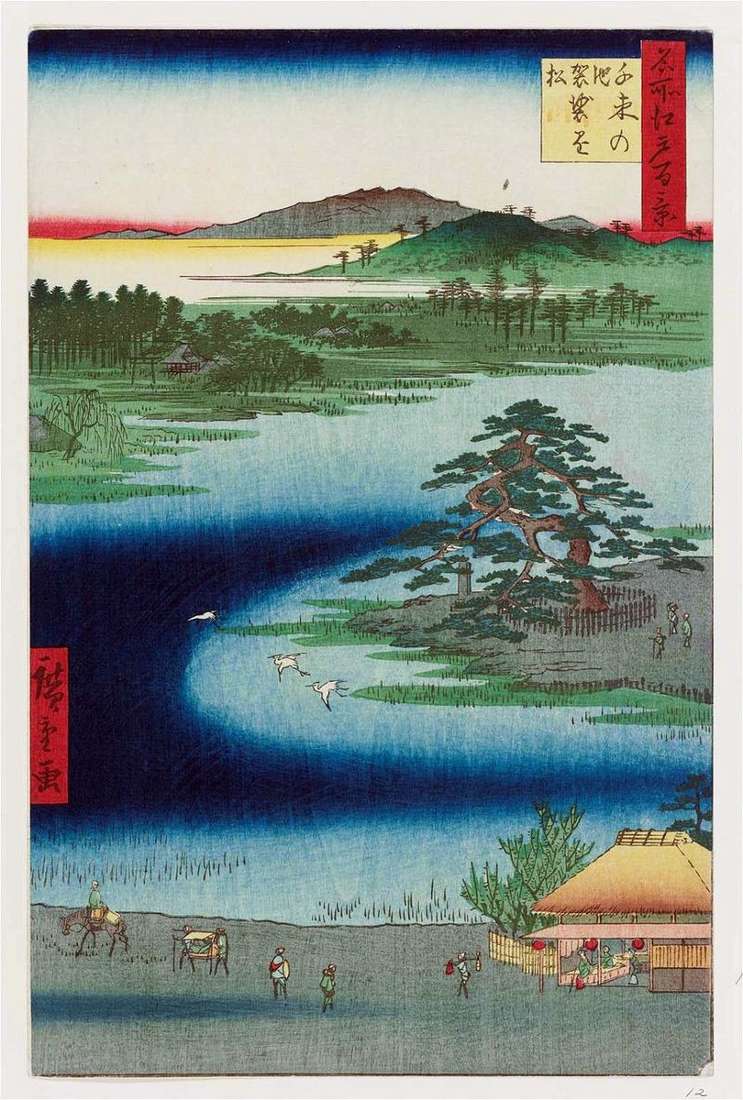 Pond Senzoku no Ike, pine Kesakakamaiu by Utagawa Hiroshige
Pond Senzoku no Ike, pine Kesakakamaiu by Utagawa Hiroshige Sanctuary Massaki on the Utigawa River, the village of Sekiya no sato and the sanctuary of Suilzin no Mori by Utagawa Hiroshige
Sanctuary Massaki on the Utigawa River, the village of Sekiya no sato and the sanctuary of Suilzin no Mori by Utagawa Hiroshige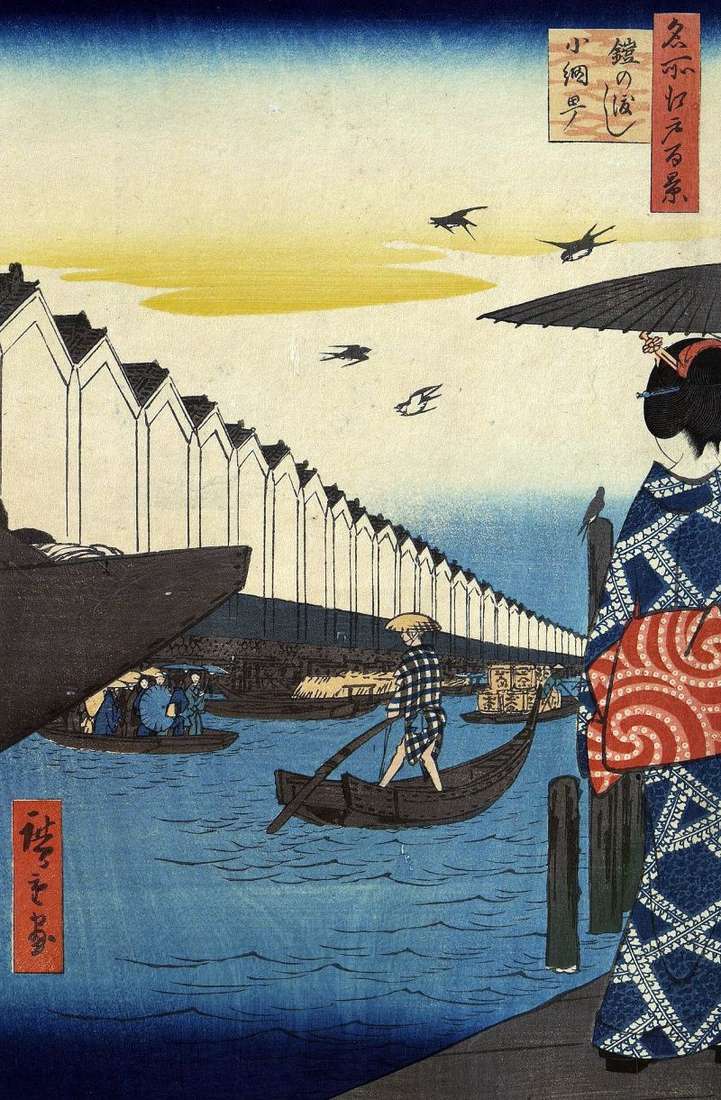 Yeroi-no Watasi crossing to Komite by Utagawa Hiroshige
Yeroi-no Watasi crossing to Komite by Utagawa Hiroshige